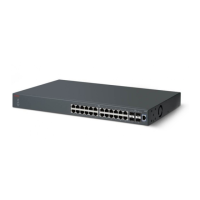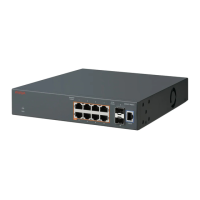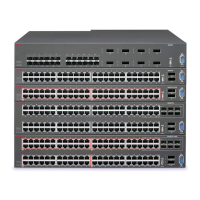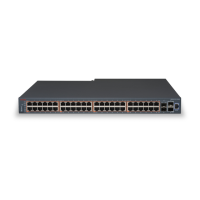Configuring a switch stack base unit
Use this procedure to configure a stack base unit and to display base unit information.
Before you begin
When physically cabling up a switch stack, only one switch must have the Base Unit Select switch
set to the Base position and this switch becomes the Base Unit for the stack.
Procedure
1. In the navigation tree, double-click Edit.
2. In the Edit tree, click Chassis.
3. In the Chassis tree, click Switch/Stack.
4. In the work area, click the Base Unit Info tab.
5. In the AdminStat section, click a radio button.
6. In the Location section, type a character string.
7. On the toolbar, click Apply.
Base Unit Info field descriptions
The following table describes the fields on the Base Unit Info tab.
Name
Description
Type Indicates the switch type
Descr Describes the switch hardware, including number of
ports and transmission speed
Ver Indicates the switch hardware version number
SerNum Indicates the switch serial number
LstChng Indicates the value of sysUpTime at the time the
interface entered its current operational state. If you
entered the current state prior to the last
reinitialization of the local network management
subsystem, the value is zero.
AdminState Specifies the administrative state of the base unit
switch. Values are enable or reset.
OperState Indicates the operational state of the switch
Location Specifies the physical location of the switch
RelPos Indicates the relative position of the switch
BaseNumPorts Indicates the number of base ports of the switch
TotalNumPorts Indicates the total number of ports on the switch
IpAddress Indicates the base unit IP address
RunningSoftwareVer Indicates the version of the running software
Configuring the switch using EDM
138 Getting Started with Avaya ERS 3500 Series July 2015
Comments on this document? infodev@avaya.com

